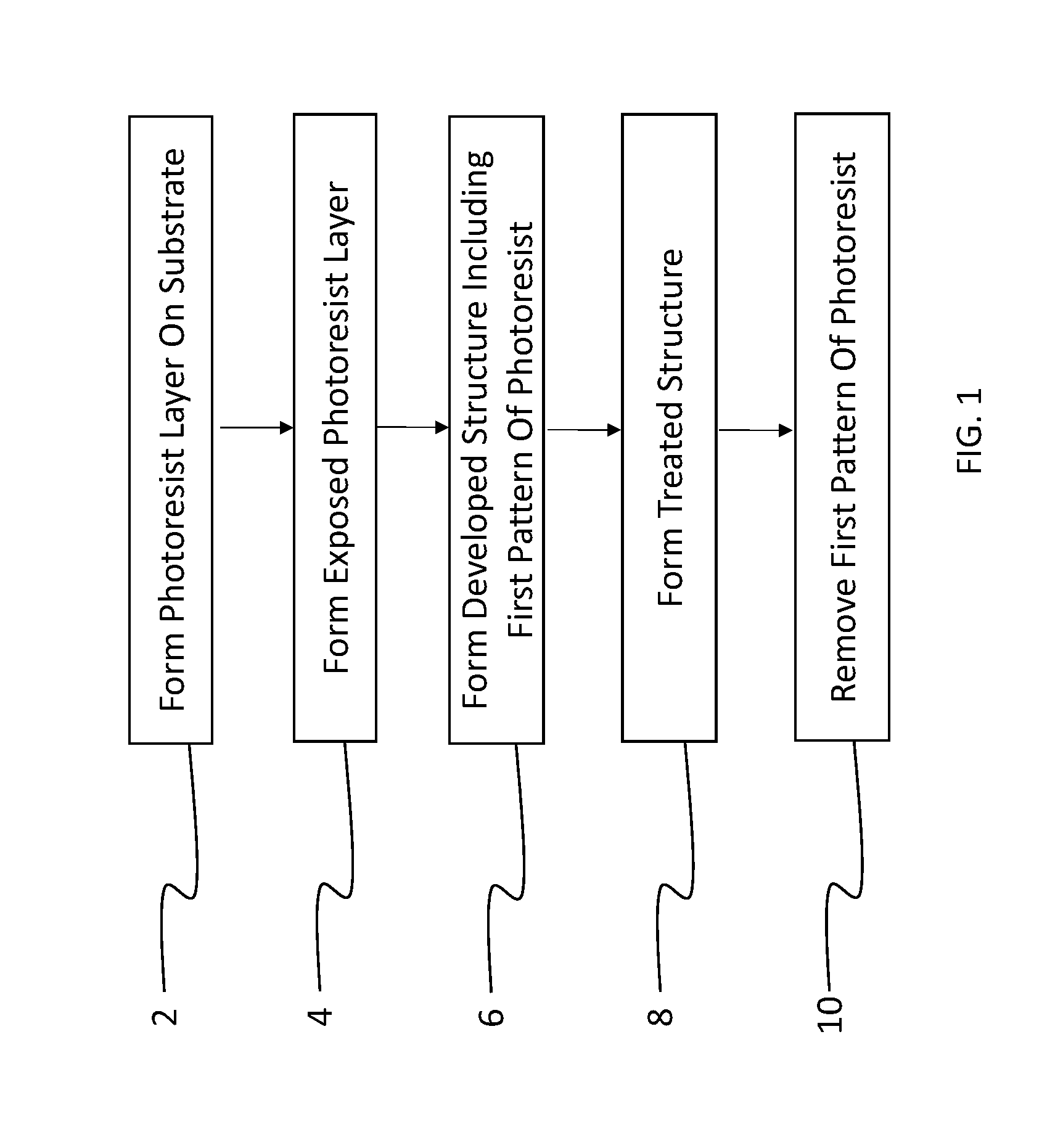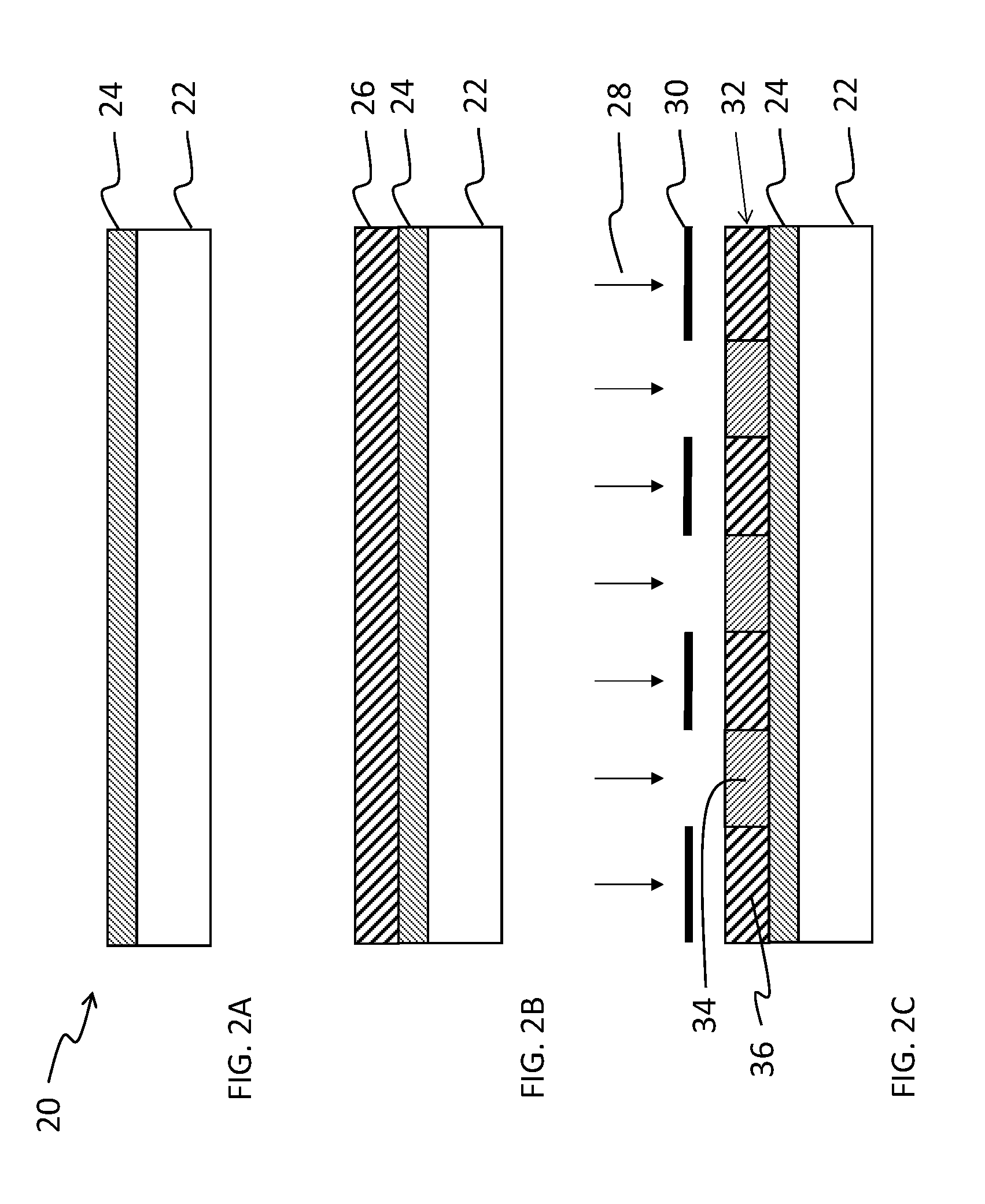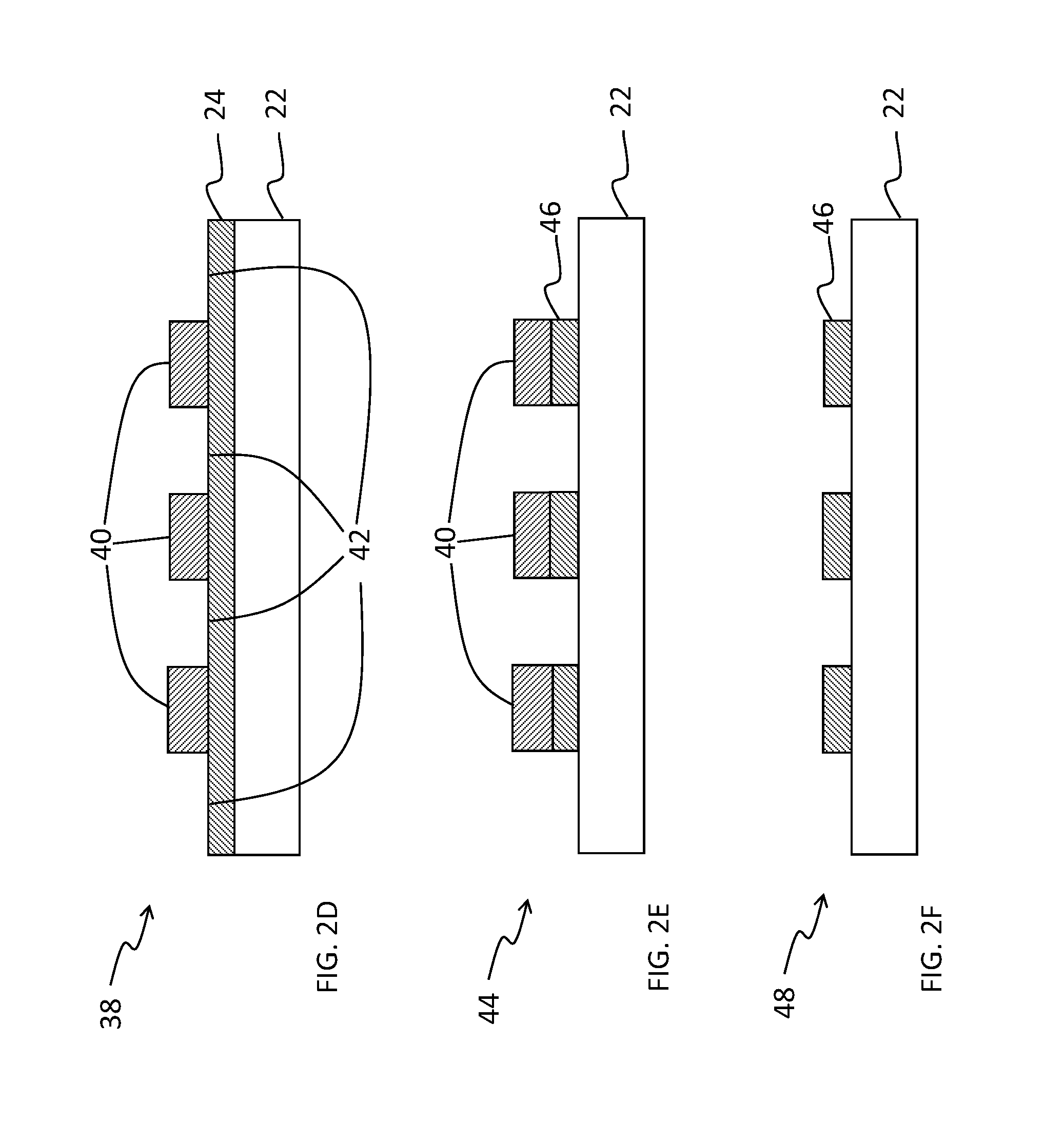Fluorinated photoresist with integrated sensitizer
- Summary
- Abstract
- Description
- Claims
- Application Information
AI Technical Summary
Benefits of technology
Problems solved by technology
Method used
Image
Examples
embodiment 1
[0067]A method of patterning a device comprising: providing a layer of a fluorinated photopolymer over a device substrate, the fluorinated photopolymer comprising at least three distinct repeating units, including a first repeating unit having a fluorine-containing group, a second repeating unit having an acid- or alcohol-forming precursor group, and a third repeating unit having sensitizing dye, wherein the photopolymer has a total fluorine content in a range of 15 to 60% by weight; exposing the photopolymer layer to patterned light to form an exposed photopolymer layer; and contacting the exposed photopolymer layer with a developing agent to remove a portion of the exposed photopolymer layer in accordance with the patterned light, thereby forming a developed structure having a first pattern of photopolymer covering the substrate and a complementary second pattern of uncovered substrate corresponding to the removed portion of photopolymer, the developing agent comprising at least 5...
embodiment 2
[0068]The method of embodiment 1 wherein the fluorinated solvent is a hydrofluoroether.
embodiment 3
[0069]The method according to any of embodiments 1 or 2 wherein the photopolymer has a total fluorine content in a range of 30 to 60% by weight.
PUM
 Login to View More
Login to View More Abstract
Description
Claims
Application Information
 Login to View More
Login to View More - R&D
- Intellectual Property
- Life Sciences
- Materials
- Tech Scout
- Unparalleled Data Quality
- Higher Quality Content
- 60% Fewer Hallucinations
Browse by: Latest US Patents, China's latest patents, Technical Efficacy Thesaurus, Application Domain, Technology Topic, Popular Technical Reports.
© 2025 PatSnap. All rights reserved.Legal|Privacy policy|Modern Slavery Act Transparency Statement|Sitemap|About US| Contact US: help@patsnap.com



